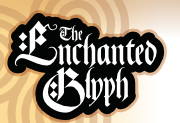 |
|
The runes were born as sacred magical
symbols for a preliterate culture with a rich oral tradition. Over
the many centuries of their use tribes separated, languages divided,
writing evolved, and the use and meanings of the runes reflected
these changes. Even their names vary according to when they were
used and by whom.
The only contemporary source of meanings and suggestions of use
are the Eddas of the 5th century, and a group of rune poems written
in the 13th century. These writings, from very late in the runeís
history, left lots of room for interpretation.
The exact meaning of each of the runes is a riddle. Their historic
lifespan and use by a broad cultural base preclude simple direct
translation. How ever there is a great deal of continuity to their
themes and general meanings.
The runes are divided into three groups of eight, the Aettir. The
first Aett belonged to Freya, goddess of peace and prosperity, who
watched over the concerns of businessmen, merchants, and farmers.
The second Aett was ascribed to Heimdall, god of rulers and warriors.
The final group was Tyr's, whose domain was that of lawyers, poets,
priests, and magicians.
We would love to say that the definitions below are absolute, to
us they are, but thatís not to say there aren't other valid interpretations.
A search through the volumes of conflicting evidence may yield variations
that work better for you. We encourage your personal exploration
of the runic traditions.

|





